This past summer, on my way from Fort Collins, Colorado to Laramie, Wyoming, I took route 287. It traverses some low-relief outcrops of the “basement complex” igneous and metamorphic rocks that are part of the Wyoming Terrane (or “Wyoming Craton”) – an ancient micro-continent that annealed with other micro-continents to help comprise what we today call “North America.”
At the first outcrop at which I stopped displayed a fine ensemble of metamorphic rocks like gneiss and amphibolite, cross-cut by granitic dikes. Everything had been deformed by boudinage and folding on multiple scales. Here’s a few looks:
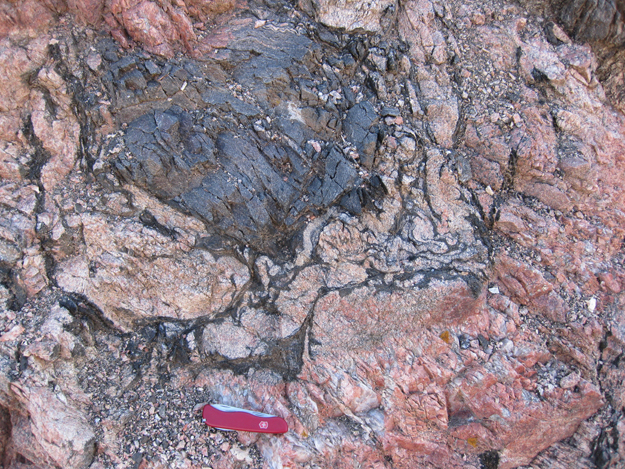
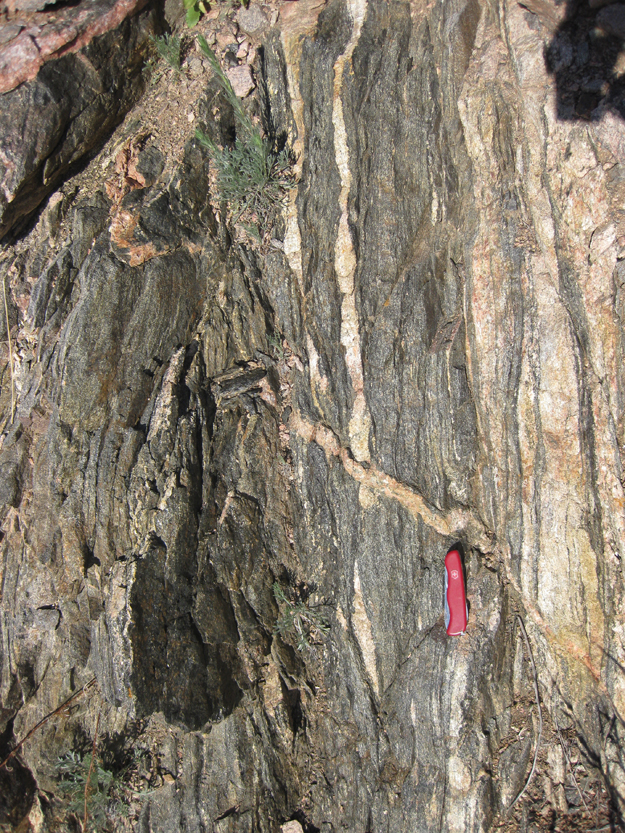
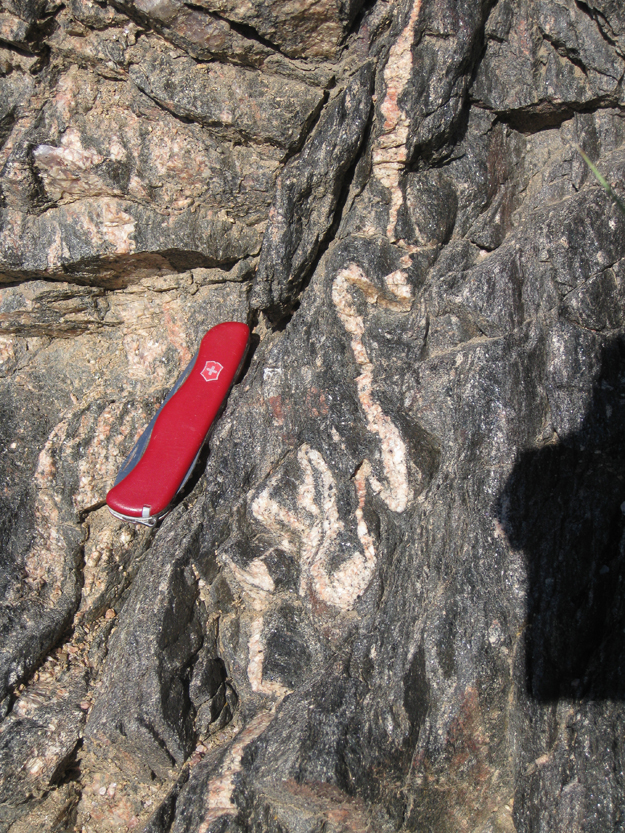
(In case you’re wondering why this looks familiar, I’ll remind you that a closer look at this last folded granite dike was featured as the Friday fold in early August.)
The second outcrop was dominated by intrusive igneous rocks. Here’s the entire outcrop in one panoramic view (click to enlarge):

The neat thing about this outcrop is that it’s polka-dotted!
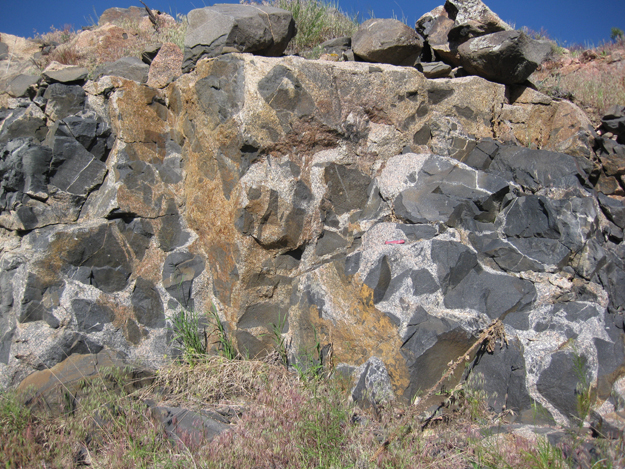
Nice contrast, eh? Dark, fine-grained inclusions in coarse-grained, light-colored granite. At first glance, these appear to be xenoliths, chunks of pre-existing mafic rock that had been broken off and stoped into the granite magma chamber before it crystallized and stiffened up (at the end of this post, we saw a lovely example of stoping in Patagonia’s Cuernos del Paine).
But wait… some of them look a little bit different:
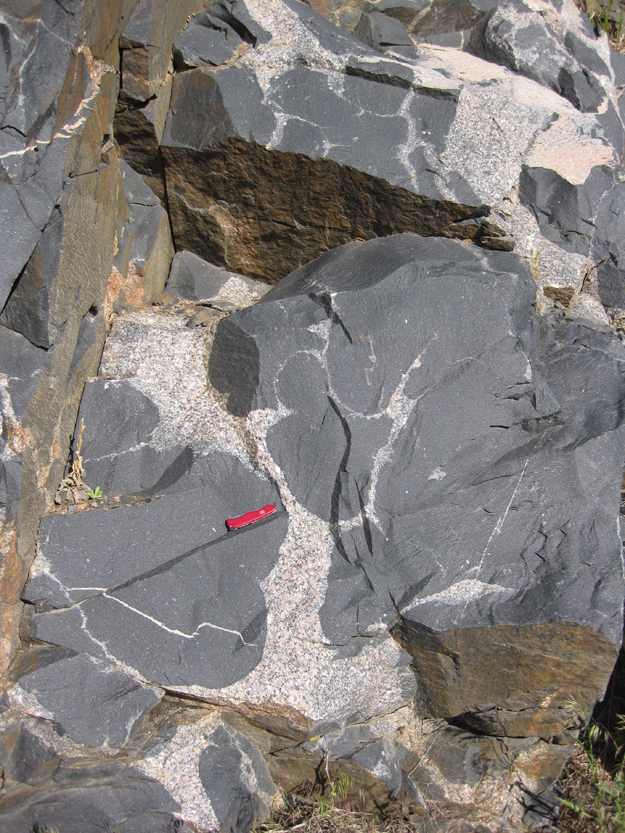
Note the round shapes of these mafic bits: perhaps they are not xenoliths at all, but microgranular mafic enclaves (MMEs), primary plutonic structures that result from the immiscibility of mafic and felsic magmas that mingle at depth. If they don’t mix, they can form blobs that are reminiscent of the round droplets of oil in salad dressing vinegar. Because oil and vinegar don’t mix, the salad dressing will self-organize into two separate bits after being shaken.
Looking at that last image, I’m struck by the way the dark bits (xenoliths? MMEs?) in the upper right are “penetrating” each other in broad, gentle curves.
Here’s a bunch of these rounded forms, all stacked up next to one another with very little granite to separate them, like sardines in a can:
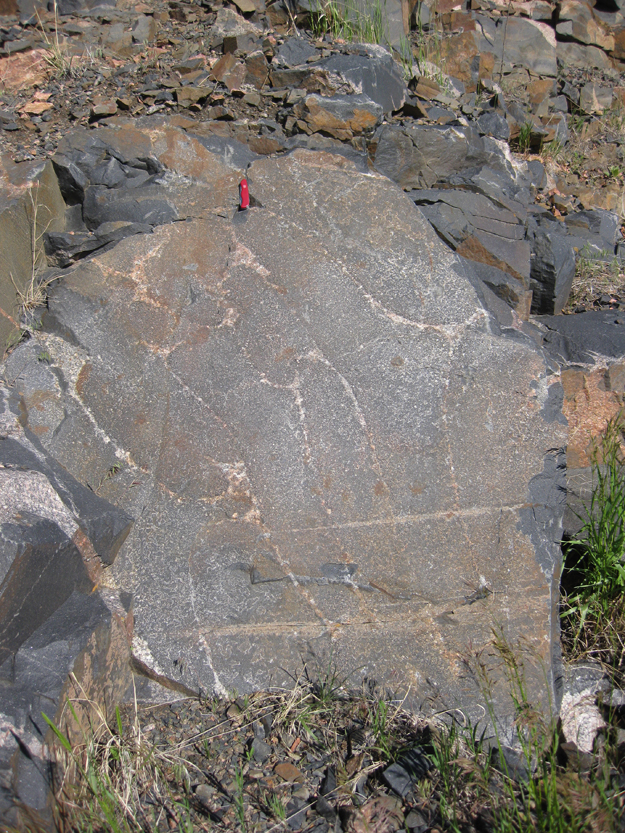
This reminds me strongly of the “Dalmatian” pluton I saw on the 2009 Owens Valley field forum. Again there, the question was: xenoliths or MMEs? If they are nice and round, it supports the MME interpretation.
…But then again, some of them are clearly angular:
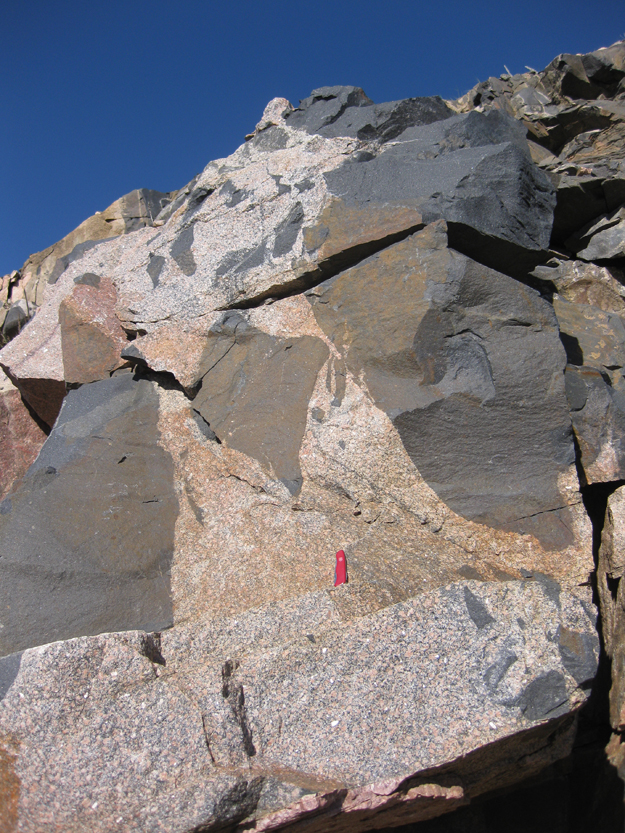
Those look more like xenoliths to me.
…As do these. You can even see a crack (an arcuate-shaped crack, at that!) extending across one in the middle:
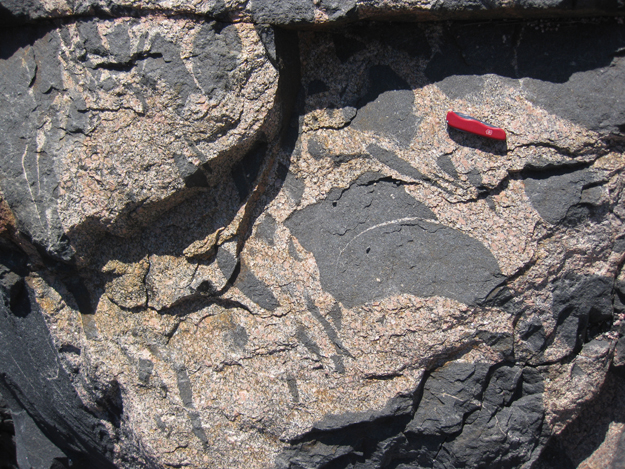
What the heck? How do we explain this variation? This next collection shows broad rounded corners on some of the mafic inclusions, while others show jagged, angular cracks (filled with pink granite):
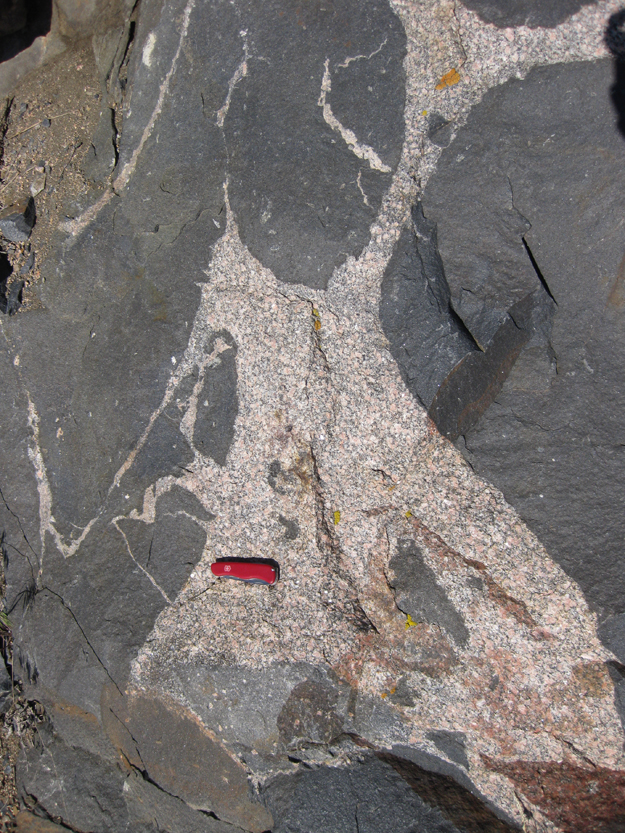
I’d love for an igneous petrologist to weigh in and let me (and us) know what they think is going on with this outcrop – how did these mafic inclusions form? Were they originally sold xenoliths that experienced some thermal erosion to make them round? Were they originally liquid immiscible blobs of mafic magma that later solidified and ripped into jagged pieces? Or perhaps a third possibility that I’m not imaginative enough to dream up?
One final photo – a treat for the structural geologists out there. Here’s an en echelon series of rips in the mafic rock, hosting small granitic intrusions:
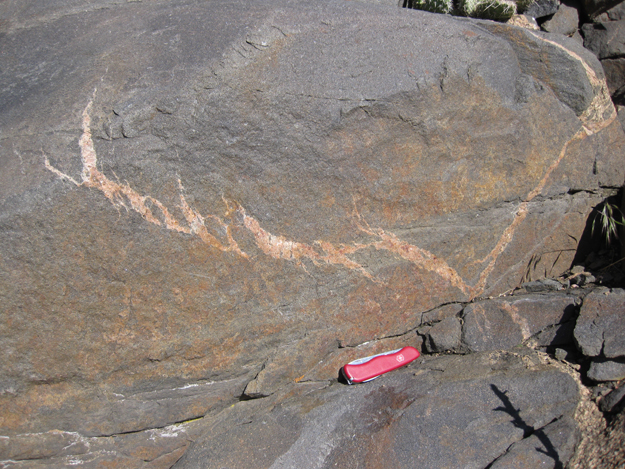
And that’s all you get – Reluctantly, I had to leave the outcrop and keep moving north up route 287 : I had an appointment to get attacked by a T. rex an hour later.










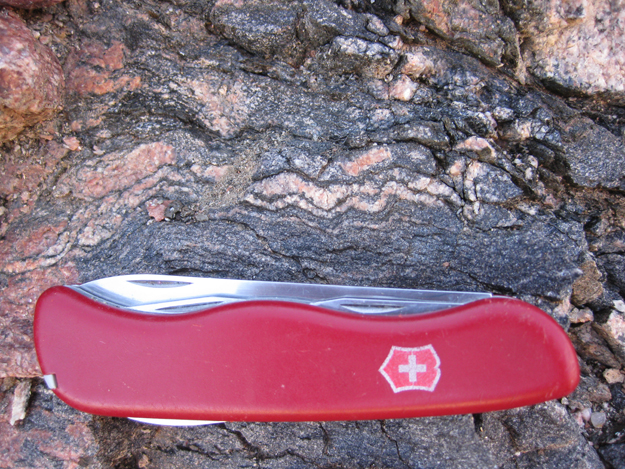










Discussion about this post